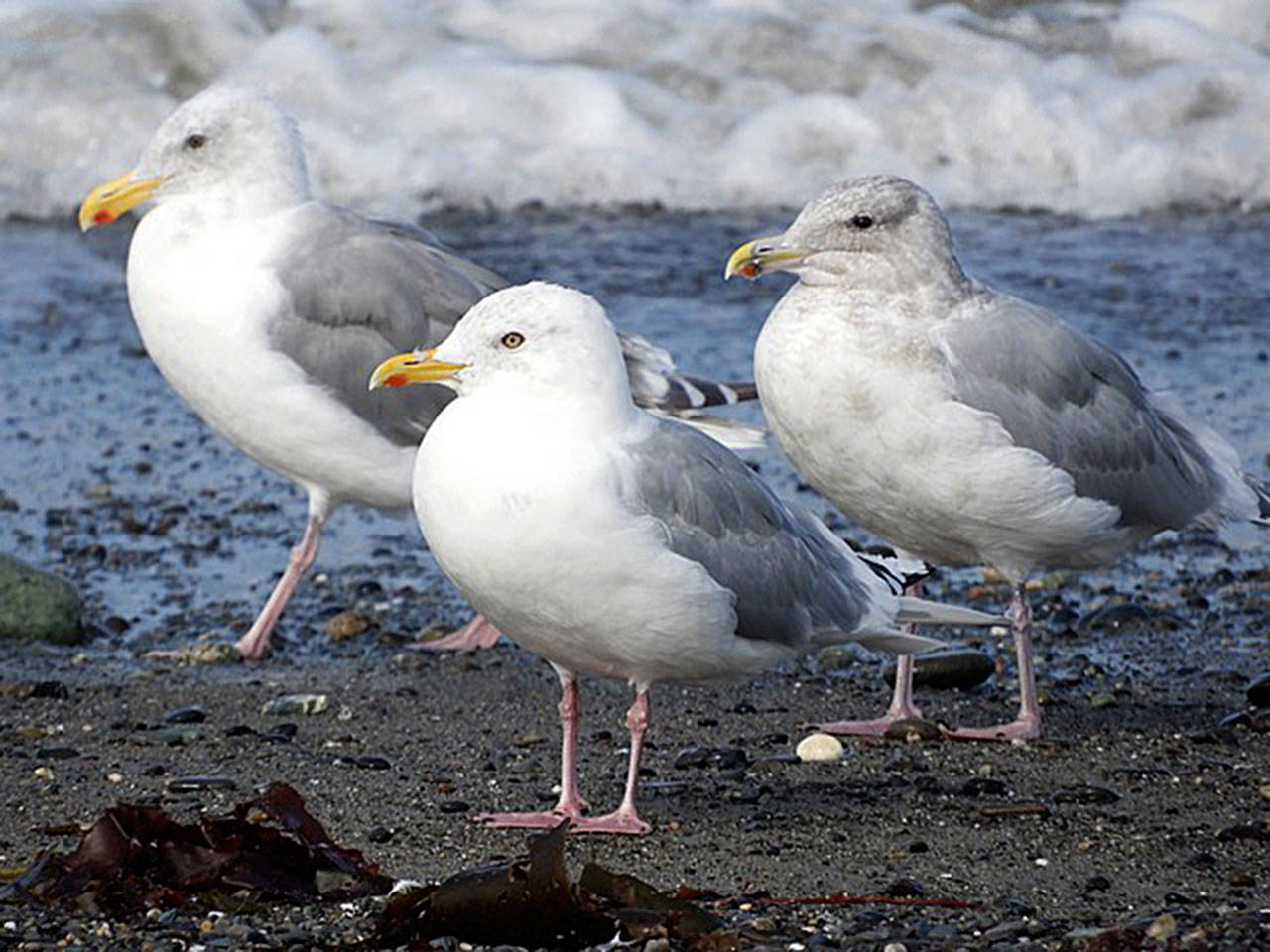Adaptable, intelligent, opportunistic … during July in Sequim we have an excellent opportunity to learn about gulls.
Often thought to be the most versatile birds in the world, gulls would likely win the swim-run-fly bird triathlon. In the summer, the Dungeness National Wildlife Refuge, Protection Island and Dungeness Bay are literally packed with both resident and migrating gulls.
Gulls are willing to scavenge for food just about anywhere, but a story in the wonderful new book “The Bird Way” (Julie Ackerman) highlights their resourcefulness. A gull fitted with a tracking backpack for research was noted to be traveling at 65 miles per hour down the interstate in California, only to stop for some time and return at the same speed to where it started its journey.
Researchers investigating this unusual behavior found that an organic composting garbage truck traveled from a shore-side dumpster to a distant composting facility, so the gull was presumed to be inadvertently trapped in the truck. Further investigation showed the gull was actually making the trip daily, using the truck as its taxi to go to lunch at the organic composting facility, before hitching a ride back to its home colony.
While adult gulls eat almost anything with some nutritional value, they are careful parents that feed their newly-hatched chicks fresh-caught fish and invertebrates when they are available.
Our resident gulls, fondly nicknamed “Olympic Gulls” by local birders, are usually hybrids of large pink-legged and pale-winged gulls from the north (Glaucous-winged Gulls) and large pink-legged and dark-winged gulls from the south (Western Gulls).
Gull hybridization is fairly common where similar species overlap, and, unlike many hybrid animals, gull hybrids are usually not sterile and raise chicks just like normal.
Protection Island, a National Wildlife Refuge and Important Bird Area at the entrance to Discovery Bay, is the largest breeding colony of Glaucous-winged Gulls in the state with several thousand breeding pairs. Researchers estimate that about half of the nesting gulls at Protection Island look like pure Glaucous-winged Gulls, and the other half look like hybrids.
Gulls take 2-4 years to attain their distinctive adult plumage, so be on the lookout for first-year brownish-gray or later splotchy “in-between” immature birds.
From summer through winter, the Strait of Juan de Fuca is a magnet for migrant gulls arriving from all over North America. From June to October, resident gulls are joined by thousands of California Gulls that migrate here from their nesting grounds on islands in inland lakes, mostly from the prairie provinces of Canada and Great Salt Lake in Utah.
Salt Lake City even has a statue commemorating the California Gull’s role in ridding the settler’s crops of plagues of grasshoppers, and the California Gull ironically is the state bird of Utah.
Northern-nesting gulls spending the winter here also include dainty Mew Gulls and Bonaparte’s Gulls, larger Iceland Gulls, and Herring Gulls.
Heermann’s Gulls, with their flashy red bills, gray bodies, and black legs, arrive here in summer after nesting in the Gulf of California. They disperse northwards only for the later summer and fall season, retreating in winter to California and Mexico. These distinctive gulls may often be seen at Point Hudson in Port Townsend or at Ediz Hook in Port Angeles.
Read up on ‘The Bird Way’
“The Bird Way” is the July Olympic Peninsula Audubon Society Book Discussion Group monthly book choice. This free group is open to the public and discusses one book a month, from a range of environmental, wildlife and bird selections. The group is meeting online via Zoom. Find out more at OlympicPeninsulaAudubon.org under “Events.”
Judith White is President of the Olympic Peninsula Audubon Society.



